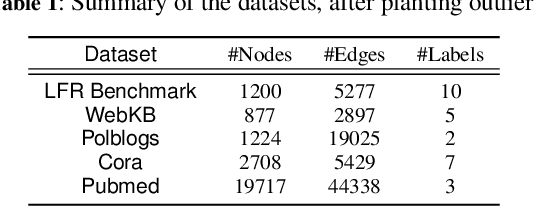Integrating Network Embedding and Community Outlier Detection via Multiclass Graph Description
Paper and Code
Jul 20, 2020



Network (or graph) embedding is the task to map the nodes of a graph to a lower dimensional vector space, such that it preserves the graph properties and facilitates the downstream network mining tasks. Real world networks often come with (community) outlier nodes, which behave differently from the regular nodes of the community. These outlier nodes can affect the embedding of the regular nodes, if not handled carefully. In this paper, we propose a novel unsupervised graph embedding approach (called DMGD) which integrates outlier and community detection with node embedding. We extend the idea of deep support vector data description to the framework of graph embedding when there are multiple communities present in the given network, and an outlier is characterized relative to its community. We also show the theoretical bounds on the number of outliers detected by DMGD. Our formulation boils down to an interesting minimax game between the outliers, community assignments and the node embedding function. We also propose an efficient algorithm to solve this optimization framework. Experimental results on both synthetic and real world networks show the merit of our approach compared to state-of-the-arts.
 Add to Chrome
Add to Chrome Add to Firefox
Add to Firefox Add to Edge
Add to Edge